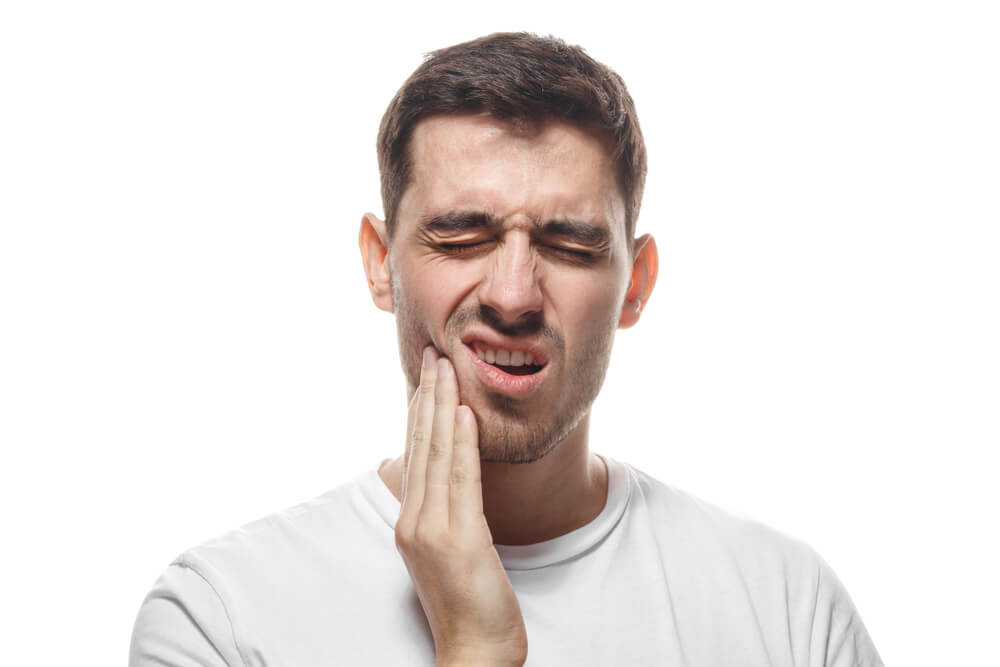The temporomandibular joint (TMJ) is the hinge which connects one’s jaw to their temporal bones of their skull, that are located in the front of both ears. It allows you to move the jaw up and down as well as side to side, letting you talk, chew, and also yawn. The TMJ behaves like a sliding hinge, effectively connecting the jawbone to the skull. Dysfunction may cause pain and discomfort.
What is Temporomandibular Joint disease?
TMJ disorders, i.e., a kind of temporomandibular disorder (TMD) may lead to pain in the jaw joint along with in the muscles which control jaw movement. Therefore TMJ disorders tend to be conditions which impact the TMJ particularly. There are some possible symptoms, that can cause differing amounts of discomfort.
When looking at TMJ disorders, these are a broad category. Moreover, the term encomapsses many possible causes. Therefore there are different treatment choices available as well.
The doctor may diagnose your TMJ disorder based upon a range of symptoms, like persistent pain around your jaw as well as restricted jaw movement. Many cases of TMJ disorders resolve by themselves in a short period, often in a couple of months. Nevertheless, some cases can be ongoing and reoccur.
Types of pain
TMJ usually causes much pain and discomfort. The types of pain include:
- Pain and tenderness in the face, jaw joint area, shoulders, plus neck, and in or around your ear at the time that you chew, speak and open the mouth wide.
- I am experiencing problems when trying to open the mouth wide.
- Jaws which get “stuck” or even “lock” when in the open-or-closed-mouth type of position.
- Experiencing clicking, popping, and the grating sounds in your jaw joint at the time of opening or closing the mouth or when chewing. This can or cannot be painful.
- I have a tired feeling in the face.
- Finding it difficult chewing or having a sudden uncomfortable bite, like the upper as well as lower teeth, feel like they do not fit together in a proper way.
- I am swelling on the side area of your face.
- You can even have toothaches, headaches, earaches, ringing in the ears (or tinnitus), neck aches, dizziness, as well as upper shoulder pain.
Causes of TMJ disorder
The temporomandibular joint effectively combines a hinge action specifically with sliding motions. When considering the part of bones which interact in the joint, these are covered with cartilage moreover tend to be separated by a useful small shock-absorbing disk, that often allows the movement to remain smooth.
TMJ disorders happen when:
- The disk erodes and moves out of the proper alignment
- Your joint’s cartilage gets damaged due to arthritis
- Your joint gets damaged because of a blow or some other impact
- There is some physical injury
- Grinding or clenching teeth whilst sleeping
- Due to autoimmune diseases
- Because of dental surgery
- You have some infections
Other causes can be genetic, hormonal, and environmental. For example, violinists have said to have TMJ disorders more in comparison to the general population, as their work includes holding the instrument beneath the jaw. This may lead to strain, that causes TMJ disorders.
Women are said to have TMJ disorders more than men. Therefore researchers are finding hormonal causes for TMJ. The cause is not exactly understood; researchers feel like investigating the link among female hormone estrogen as well as TMJ disorders may be helpful.
Solutions and treatment
You may be wondering how to get rid of jaw pain. There are some treatment choices available.
Treatments to do at home
Some things can be done on your own so as to help with TMJ symptoms. The doctor may tell you to try some of them together.
Over-the-counter medications– This includes nonsteroidal anti-inflammatory drugs or NSAIDs such as naproxen and ibuprofen. These can aid in relieving muscle pain as well as swelling.
Moist heat and cold packs– You can apply the ice pack to your face’s side and temple place for around 10 minutes. If the dentist is fine with it, do some simple jaw stretches. After you have done this, hold a warm towel to your face’s side for around 5 minutes. Do this some time every day.
Try and eat soft foods, avoid much jaw movements, do not rest the chin on the hand, let your teeth remain slightly apart, and learn some helpful relaxation techniques.
Other treatments
This includes medications. The dentist may prescribe these to you. You may want to try an anti-anxiety medication so as to relieve stress. A splint or also night guard can be tried out. You can get dental work done.
Other treatments include transcutaneous electrical nerve stimulation, ultrasound, trigger-point injections, radio wave therapy, and low-level laser therapy. You can also get the surgery done.
Our team incorporates the evidence-based methods promoted by TMJ & Sleep Therapy Centre International, which unites specialists around the world to advance TMJ and airway-focused care. Providers throughout this network often complete advanced coursework such as the Centre’s acclaimed Mini Residency for Sleep-Related Breathing Disorders and Craniofacial Pain, ensuring that patients receive care supported by the latest clinical insights.

